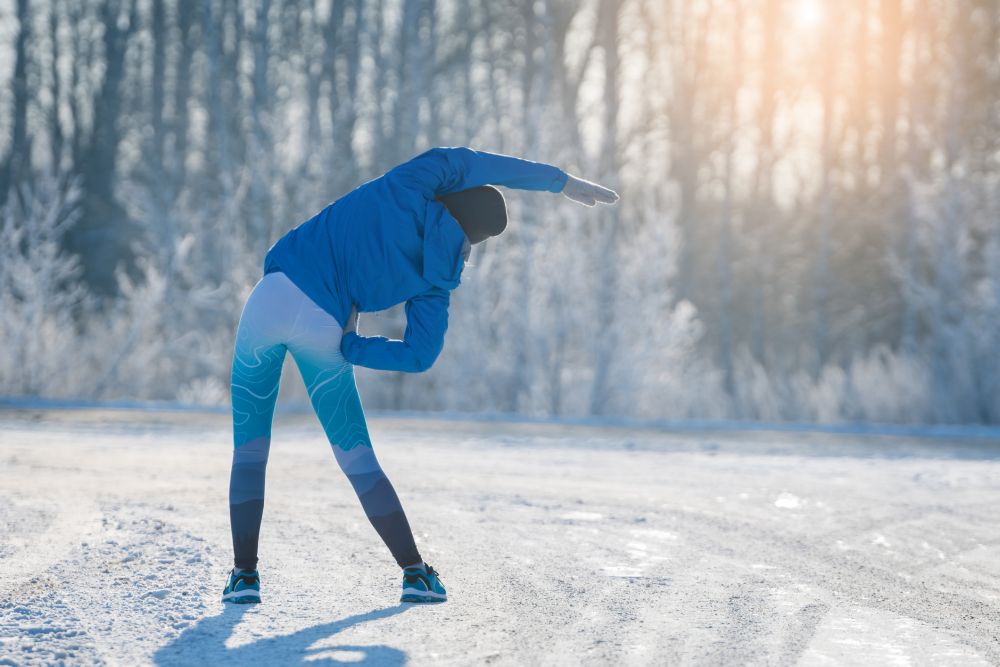Keep hydrated - you may not sweat much as you do in hot weather, but your body still loses fluid through sweat in winter.

Picture: iStock
Many would say winter is here already because temperatures have dropped, long sleeves and boots are out and electric blankets are being switched on at night.
But according to traditional weather systems, it’s still autumn and winter begins in June. Nevertheless, cooler weather is here and some people are already starting to hibernate.
The South African winter is very mild compared to winters in many parts of the world, but we still struggle to keep up with our physical activity routines when cold weather creeps in.
In Scandinavian countries, where temperatures drop as low as -20°C in winter, people simply dress accordingly and continue their exercise routines. There really is no excuse to hibernate in winter.

Picture: iStock
There is a general feeling that colder weather “weighs” one down and one becomes sluggish. Here are some tips to make it easier to help you to continue exercising during winter:
• Stock up on warm, but breathable gym clothes. Long tights, long-sleeve tops, buffs and gloves.
• Join a gym or any other fitness facility (if you aren’t a member of one yet). This is one way to beat the cold because training indoors cancels out the cold weather. There are cardio machines, treadmills, bicycles, ellipticals, rowing machines, stair masters, weight machines, free weights and group training classes.
• Try a new activity to help you change your mindset about winter. Take up yoga, pilates or swimming in an indoor heated pool.
• Ditch the lifts and escalators and opt for the stairs at work or shopping centres.

Picture: iStock
• Train at home. Do body weight exercises such as lunges, push-ups and burpees. Do cardio training using a skipping rope or purchase exercise DVDs to do routine workouts.
• Sign up for social indoor sports. Many areas have a community hall or facility used for indoor football, netball and basketball. Because this is social, there are games for different levels of expertise (beginner, intermediate and advanced).
But not everyone hibernates or stays indoors in winter. Often runners, cyclists and walkers continue their preferred activity. Here are some tips to keep you active outdoors in winter:
• Invest in winter training gear. Make sure it’s not only warm, but also keeps you dry. The quickest way to get sick in winter is to exercise in wet clothing. Exercising in warm clothes can easily make you sweaty and sweaty clothes can also cause you to lose body heat.
To avoid this, ensure your winter gear is made of breathable material. Protect your extremities (fingers, toes, ears, nose and chin) with the right gear. Stock up on gloves and winter training socks. A buff is a piece of clothing I think many people underestimate the usefulness of. It can be wrapped around your head, ears, chin and nose all at once.
Picture: iStock
• Layer up before you start to withstand the initial chill. Once your body warms up, start removing layers until you are comfortable.
You need to avoid overheating. If it’s raining, wear waterproof gear to prevent your skin getting wet. For windy weather, wear a thin wind resistant top layer, like a windbreaker or gillet.
• If you are an early bird who trains first thing in the morning or someone who trains in the evenings, wear lighter or brighter colours like white, yellow and orange so you are visible to vehicles on the road.
Alternatively, you can purchase reflective bibs or bands, head lamps, ankle reflectors to ensure you are visible. There are numerous accounts of runners, cyclists and walkers being bumped by cars.
• Injuries are common in winter. Many are caused by lack of flexibility. Many of us forget to warm up, cool down and stretch in winter. This can lead to muscle strains and sprains.

Picture: iStock
Consider doing an indoor warm-up before heading out. High intensity interval exercises are a good way to warm the body up fast. Consider skipping, jumping jacks, burpees, mountain climbers, jump squats and stretches at home and then head out on your run, cycle or walk.
• Don’t forget to keep hydrated. You may not sweat as much as you do in hot weather, but your body still loses a considerable amount of fluid through sweat in winter. Make sure you drink during your training sessions to avoid dehydration.
For those who are not used to training in winter, let’s change that this year. Challenge yourself and try it, you’ll thank me come spring.
Zulu is a qualified biokineticist and cofounder of PopUpGym. Follow her on Instagram: @letshego.zulu Twitter: @letshegom. Facebook: Letshego Zulu
For more news your way, download The Citizen’s app for iOS and Android.





